There's no mistaking it: on Monday morning, in a greenhouse along Boomaweg in Monster, Netherland, a group of people in green sweaters can be seen gathered around a low-growing crop. These individuals are from Hazera Seeds, and the crop is radish, grown in the greenhouse. As a market leader in this expanding global segment, the breeding company aims to maintain its leadership position. Continuing to develop, together with growers, is the motto.
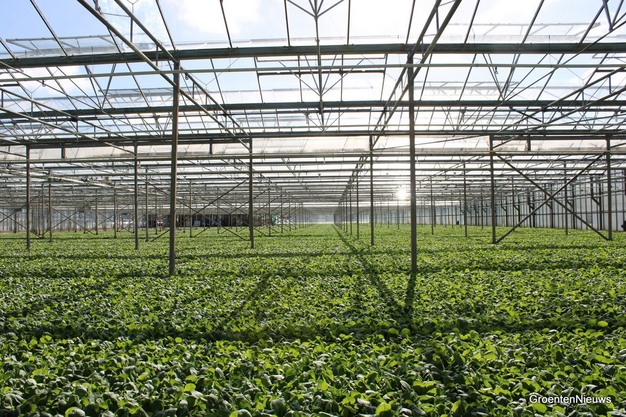 © Thijmen Tiersma | FreshPlaza.comUnder a lovely spring sun on Monday, March 31, looking at radish varieties in the Jongfresh greenhouse, that's nice work, isn't it?
© Thijmen Tiersma | FreshPlaza.comUnder a lovely spring sun on Monday, March 31, looking at radish varieties in the Jongfresh greenhouse, that's nice work, isn't it?
Testing under practical conditions
For developing good radish varieties, it is important to test varieties in practice. Hazera does this in various markets where radish cultivation is significant, such as in Germany, Italy, and the United States. While internationally, it often involves outdoor cultivation, radish in the Netherlands is truly a greenhouse crop.
That's why the breeding company likes to collaborate with grower Jongfresh. This radish grower has several greenhouse locations in the Westland. In the middle of the greenhouse of the Westland grower on Boomaweg, space has been freed up for trials. This way, the new varieties can be optimally tested in the greenhouse climate, and the breeders can make their selections.
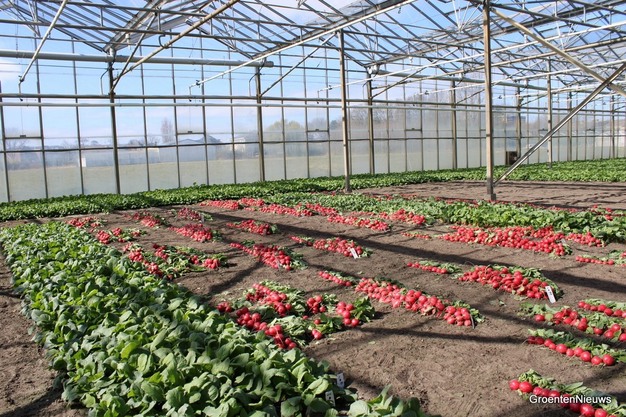 © Thijmen Tiersma | FreshPlaza.com
© Thijmen Tiersma | FreshPlaza.com
Red is the main focus, but Hazera also distinguishes itself with colors.
Contents
In the greenhouse, there are bunches of harvested radishes everywhere, mostly red, but also radishes in other colors. "With radishes in various colors, we are truly innovative," says head breeder André van Andel. He has been in the business since 1992. Further down in the greenhouse is colleague David Boeren. He is also a radish breeder and hopes to eventually succeed André.
Most growers mainly cultivate red radishes. It is the radish that people have known for ages and that enthusiasts have been eating for ages. Hazera aims to introduce younger generations to radishes and increase consumption among enthusiasts, for example, through snack concepts. New shapes, colors, and flavors are also useful in this regard.
The contents are also a trump card. "Radish is rich in glucosinolates. These are substances for which health claims are made for cabbages and broccoli, but much fewer people know that these healthy substances are also abundant in radishes. Radish fits well into the trend where people want to eat healthier and eat more vegetables."
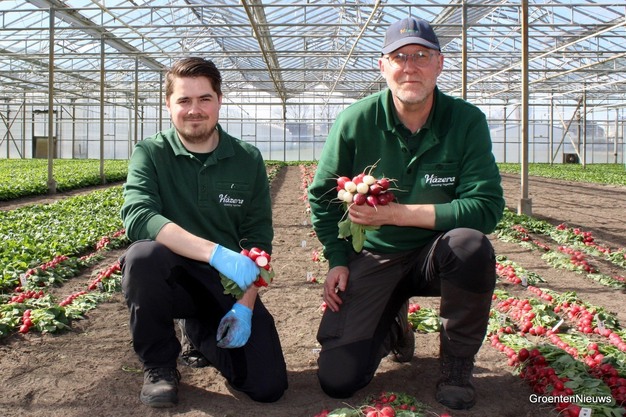 © Thijmen Tiersma | FreshPlaza.comDavid Boeren and André van Andel, radish breeders at Hazera
© Thijmen Tiersma | FreshPlaza.comDavid Boeren and André van Andel, radish breeders at Hazera
Even white, but not watery inside
When André started as a radish breeder at Hazera in 1992, the market focus was mainly on appearance. "Radish had to be beautiful, as the idea was that this would help grow impulse purchases. Nowadays, the focus is also really on the internal properties of the radish."
He cuts one open. Inside the red bulb, we see a beautifully even white. Step by step, the internal quality of radish has improved. Breeding takes time, especially in radishes. Before a new variety is available it takes ten to fifteen years. A challenge for breeding companies, which must predict trends far in advance.
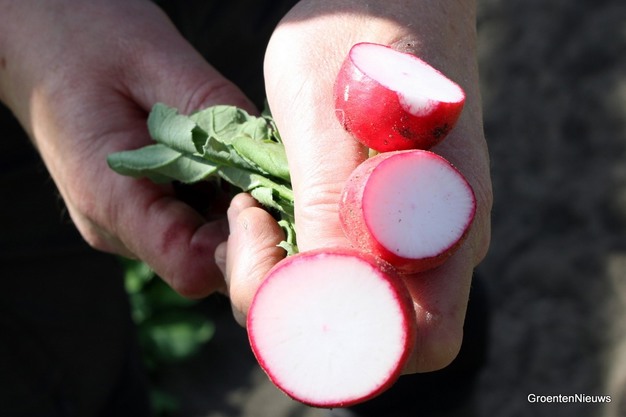 © Thijmen Tiersma | FreshPlaza.comEven white; that's how they like to see the radish at Hazera. Since André has been in the business, the focus on dry matter has increased significantly.
© Thijmen Tiersma | FreshPlaza.comEven white; that's how they like to see the radish at Hazera. Since André has been in the business, the focus on dry matter has increased significantly.
Leaf
Important varieties for Dutch growers currently include Autella F1 and Fortunella F1. "Somewhere in January-February, you see growers switch from Autella F1 to Fortunella F1," André explains. "This has to do with how easily these varieties produce leaves. In winter, this goes slower than when spring is approaching. Fortunella F1 produces shorter leaves, and therefore growers choose to sow this variety as spring approaches."
Currently, there is still a significant difference in the ability to produce more or fewer leaves. That's why the breeders have worked on an intermediate form. This has become the variety 34-620. A red radish that is still early in production offers growers an alternative with a good internal structure and not too long or too short leaves for the moment when they now switch between Autella F1 and Fortunella F1. Hazera expects to commercially introduce the variety this coming fall.
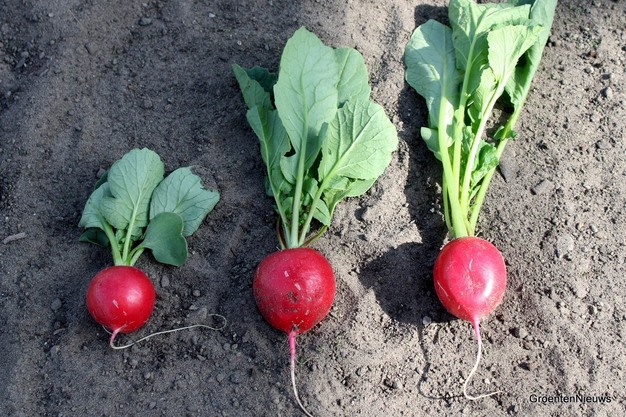 © Thijmen Tiersma | FreshPlaza.comAutella, 34-620, and Fortunella. The difference in leaf length is very clear at the end of March. 34-620 offers an intermediate leaf length for this time of year.
© Thijmen Tiersma | FreshPlaza.comAutella, 34-620, and Fortunella. The difference in leaf length is very clear at the end of March. 34-620 offers an intermediate leaf length for this time of year.
Trends are not so easy to predict far in advance. However, the fact that the climate is changing is something the breeding company has anticipated. That's why another new variety is important for radish growers who cultivate in greenhouses. It is the variety 34-569. "This variety has even shorter leaves than Fortunella F1. Now that summers are getting warmer, you see that varieties sometimes produce more leaves than is convenient. This variety does not do that, even under warm, summer conditions."
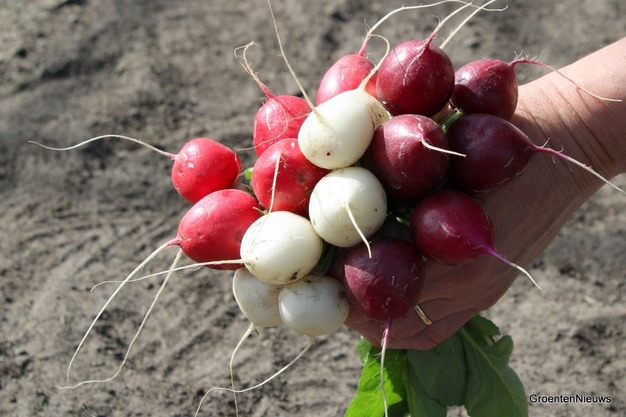 © Thijmen Tiersma | FreshPlaza.comRadish mix with red, white, and purple from the well-known purple variety Purpella F1.
© Thijmen Tiersma | FreshPlaza.comRadish mix with red, white, and purple from the well-known purple variety Purpella F1.
For more information: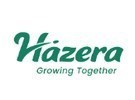
Hazera
info@hazera.nl
www.hazera.com
